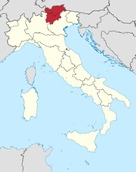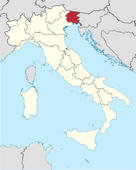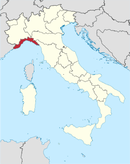|
Less then 24hrs from the Grand Opening, pipes rupture, but with the help of our plumber and a couple of extra hours we finally had the time to open our doors for a soft opening and test everything out. We thank everyone that came out in support and got a sandwich. Our grand opening is set for Saturday November 19th. Hope to see everyone there!
Marchese Italian Market's storefront is nearly complete! After a few setbacks with construction and equipment, the storefront is nearly complete and ready for a test run. Like a formula one team, our team of plumbers, electrician, and constructors have pushed through to get us ready. We would like to thank our customers that have suggested new products and have come out to see us in Pleasure House Road. Hope to see every
We put together the 10 most common mistakes and stereotypes about Italian Cooking abroad...so you can avoid them! Share this note with your friends :) 1- You shall not sip cappuccino during a meal! Coffee and cappuccino are the pride of Italy in the world; but if the first is usually consumed at the end of the meal, the second, more substantial, is sipped at breakfast, usually accompanied by some pastry. You can ask for a cappuccino at the end of a meal, just know that most Italians don’t. 2- Risotto and pasta are NOT a side dish The organization of courses in the Italian dining is unique and requires pasta and – most of the time –risotto to be served by themselves (apart from specific recipes such as Ossobuco milanese-style). The presentation of pasta as a side dish to others is widespread in several countries, but in Italy is seen almost as a sacrilege. 3- You shall not add oil to pasta water!Oil should not be added to pasta cooking water! Pasta dressing (and oil too) must be added only after you have drained it from its cooking water. Find out how to cook pasta like an Italian here. 4- Ketchup on pasta: please, don’t This is one of the combinations that most shocks Italians; although ketchup may have some similarities to tomato sauce, pouring ketchup over pasta in the “Bel Paese” is considered a real gourmet crime. Keep ketchup for your french fries or hot dogs, please! 5- Spaghetti Bolognese? No way, it’s Tagliatelle! While probably being the world’s most popular Italian recipe, you will not find any restaurant in Bologna to eat it. That’s because the original Italian recipe is “Tagliatelle Bolognese” (not spaghetti). Although this may seem a minor detail, in real Italian cuisine the pairing of the right kind of pasta with the right sauce is considered almost sacred. 6- Chicken Pasta: not in Italy Speaking with American friends, one of the most frequent requests is the advice for a typical Italian recipe for pasta with chicken. It’s always rather embarrassing to point out that in Italy there are no hot dishes featuring pasta and chicken. 7- “Caesar salad” This salad, which bears the name of its supposed creator, Caesar Cardini, is a part of the long list of recipes devised by chefs of Italian origin, but in fact is almost unknown in Italy. 8- The red and white checkered tablecloth is only a stereotype !For some strange reason, these tablecloths are universally associated with our food and with the stereotype of the "spaghetti-eater", and abroad almost all the restaurants that want to play typical Italian use them. Probably, tourists who come to visit Italy remain somewhat disappointed when they discover that the checkered tablecloths are almost never used (only restaurants for tourists do!) 9- “Fettuccine Alfredo” are popular only overseas This is perhaps the most curious in this top ten. The fettuccine Alfredo is both the most famous “Italian” food in the United States and the least known dish in Italy. These noodles, seasoned with butter and Parmigiano Reggiano, are in fact actually been invented in the “Bel Paese”, specifically by Alfredo Di Lelio, the owner of a restaurant in Rome, but in Italy have never been imposed as a traditional dish. Overseas, however, have become increasingly popular and in time became a symbol of the good life in Rome. For this reason legions of American tourists coming to Italy hoping to enjoy the fettuccine Alfredo at every restaurant on the peninsula remain very disappointed. 10 - You shall respect tradition and what Italian mamma says. She knows from her mamma, who knew from her mamma who knew from her mamma and so on. It's been tried and tested. And what a mother teaches at her daughter while they are cooking? that love is the center of all. We must share Italian food with your loved ones. It is what life, love and family are all about. I was reading an interesting pizza article thought everyone would like to read:
There are documented reasons to believe the Pompeiians ate pizza, and that they were already following an even more ancient culinary tradition that may have originated in Greece. When you think about it, pizza is a perfectly rational approach to fast food, which even in those olden times surely had its charms. The fundamentals are only the dough, a bit of kneading, and whatever topping or filling was at hand. That, and some heat. Given that the humble tomato itself did not arrive in Europe until it was imported by Neapolitan sailors returning from the New World, there is reason to think the pizza as we know it today did not in fact exist until well into the 19th century. Naples is still written of these days as the epicenter, the place where we can all experience "authentic" pizza. That may be fair to all concerned, but the true joy and splendor of pizza is that it embraces so much variation, so much interpretation, that it has become a kind of culinary Pandora's Box. This much is true: in Italy generally, and Naples certainly, pizza is a thin crust, with bubbled edges, usually lightly blackened, from the wood-fuelled brick pizza oven it cooks in. If you time it right, the dough, the sauce, and the additional toppings arrive at the same blissful level of readiness at exactly the same time, and you can barely touch the thing with your fingers, let alone eat it, when it first arrives at table. Anything deep-dish, often referred to as Chicago-style pizza, is a different item. Urban legend reports it was invented by a retired football player turned restaurateur in Chicago. More of everything, from the crust to the toppings. but the principal is the same as what the Pompeiians had: a slightly raised outer edge for the dough. Pizza dough is easy to make, requiring flour and water, some salt and yeast, and then a fair amount of kneading. That old cliche of tossing the dough in the air exists for a very good reason. It is a great way to lighten its consistency, to ensure a great thin crust. The toppings, tomato sauce and all, should not overwhelm you, or make you feel stuffed after two slices. Rather, the pizza should be treated, as it was in ancient times, as an efficient and extremely tasty way to sustain yourself. The better the quality of the ingredients, the better the pie. Two slices, as a first course. A whole pie equals a whole dinner. Just remember to raise the outer edges to hold in all the goodness, and bless the blackened outer rim. It proves you knew what you were doing. Thanks to a wonderful article by Jim Tobler on July 15, 2011Article: http://www.foxnews.com/leisure/2011/07/15/pizza-pompeiian-way/#ixzz1SGXBmJOH This year we will be attending the 2011 Fancy Food Show in Washington D.C. The show is North America’s Largest Specialty Food & Beverage Event is coming to D.C. this July! 180,000 products including confections, cheese, coffee, snacks, spices, ethnic, natural, organic and more. 2,400 exhibitors, 80 countries represented and 24,000 attendees. Looking forward to bringing in exciting new products meeting fellow importers.
After evaluating some suggestions, we will also be looking into the storefront location in Virginia Beach. Hopefully we can beat the end of summer and launch in good weather.  Trentino-Alto Adige is an autonomous region in Northern Italy. It consists of two provinces: Trentino and South Tyrol. The region was part of Austria-Hungary and its predecessors, the Austrian Empire and the Holy Roman Empire from the 8th century until its annexation by Italy in 1919. Together with the Austrian state of Tyrol it is represented by the Euroregion Tyrol-South Tyrol-Trentino. In English, the region is also known as Trentino-South Tyrol or by its Italian name Trentino-Alto Adige. The region has a population of about 1,017,000 people (519,000 in Trentino and 498,000 in South Tyrol). The population density in the region is low compared to Italy as a whole. In 2008, it equaled to 74.7 inhabitants per km2, whereas the average figure for Italy was 198.8. The population density in Trentino was 83.6, slightly higher than the one registered in South Tyrol that was equal to 67.3. As of 2008, the Italian national institute of statistics ISTAT estimated that 70,834 foreign-born immigrants lived in the region altogether, equal to 6.9% of the total regional population. The main language groups are Italian (about 63% of the total) and German (33%), with a small minority speaking Ladin (4%). The region is bordered by Tyrol (Austria) to the north, by Graubünden (Switzerland) to the north-west and by the Italian regions of Lombardy and Veneto to the west and south, respectively. It covers 13,607 km² (5,253 sq mi). It is extremely mountainous, covering a large part of the Dolomites and the southern Alps.  Friuli–Venezia Giulia is one of the twenty regions of Italy, and one of five autonomous regions with special statute. The capital is Trieste. It has an area of 7,858 km² and about 1.2 million inhabitants. A natural opening to the sea for many Central European countries, the region is traversed by the major transport routes between the east and west of southern Europe. It encompasses the historical-geographical region of Friuli and the geographical region of Venezia Giulia (known in English also as Julian March), each with its own distinct history, traditions and identity. Friuli–Venezia Giulia is Italy's most North-Eastern region. It is the fifth smallest region of the country. It borders Austria to the north and Slovenia to the east. To the south it faces the Adriatic Sea and to the west its internal border is with the Veneto region. The region spans a wide variety of climates and landscapes from the mild Mediterranean climate in the south to Alpine continental in the north. The total area is subdivided into a 42.5% mountainous-alpine terrain in the north, 19.3% is hilly, mostly to the south-east, while the remaining 38.2% comprises the central and coastal plains. Friuli-Venezia Giulia is famous for its mixtures of dishes stemming from both Friulani and Giuliani traditions. With influences from key cities such as Udine, Trieste and Venice. Friuli-Venezia Giulia is also known for its fine wine. Famous dishes include: · Crostoli Angel Wings · Frittole (Pastry) · Polenta · Brodo · Radicchio · Gnocchi alla spinache · Goulash · Peperonata Wine include: · Moscato · Verdehlo  Liguria is a coastal region of north-western Italy, the third smallest of the Italian regions. Its capital is Genoa. It is a popular region with tourists for its beautiful beaches, picturesque little towns, and good food. Liguria borders France to the west, Piedmont to the north, and Emilia-Romagna and Tuscany to the east. It lies on the Ligurian Sea. The narrow strip of land is bordered by the sea, the Alps and the Apennines Mountains. Some mountains rise above 2,000 m (6,561.68 ft); the watershed line runs at an average altitude of about 1,000 meters (3,280.84 ft) The winding arched extension goes from Ventimiglia to La Spezia and is one of the smallest regions in Italy. Liguria is just 5,422 square Kilometers, or 1.18% of all of Italy. Of this, 3524.08 kilometers are mountainous (65% of the total) and 891.95 square kilometers are hills (35% of the total). Liguria's Natural Reserves cover 12% of the entire region, or 60,000 hectares of land. They are made up of one National Reserve, six large parks, two smaller parks and three nature reserves. Sanremo is one of Italy's most famous bathing resorts and the place where the annual Italian pop music festival takes place. The beautiful Benedict monastery S. Fruttuoso merits special attention. And needless to say there are many other important historical monuments to be explored. Liguria is where pesto is originally from, one of the most popular sauces in Italian cuisine. Seafood is a major staple of Ligurian cuisine, as the sea has been part of the region's culture since its beginning. Another important aspect of the culture there is the beach. Tourists have been flocking to the Italian Riviera for decades to experience its calm, deep blue water. Famous Ligurians from this region: Simonetta Vespucci, Giuseppe Mazzini, Andrea Doria, Giuseppe Garibaldi, Simon Boccanegra, Benedicto XV, Urbano VII, Nicolo Paganini, Eugenio Montale, Pietro Germi, Italo Calvino, Edmondo de Amicis, Luciano Berio, Sem Benelli, Bernardo Strozzi, Renzo Piano, Vittorio Gassman, Renata Scotto, Lyda Borelli, and of course Christopher Columbus. |
Archives
February 2013
Categories
All
|
 RSS Feed
RSS Feed